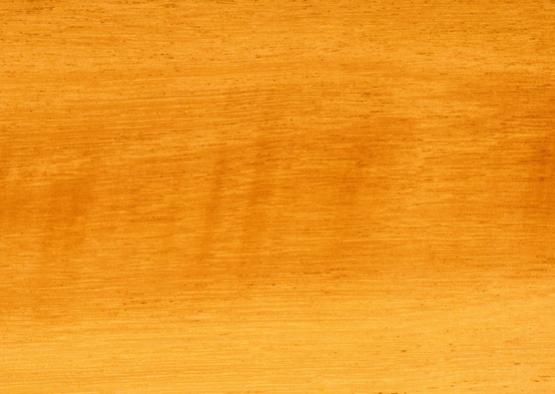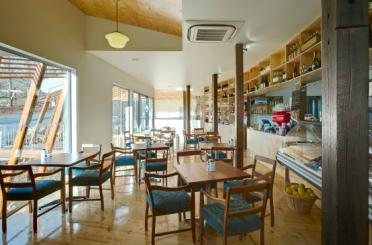Coast grey box is a highly durable Australian hardwood often used for heavy construction applications and as round timber.
Bosisto's Box, Gippsland Green Box
Eucalyptus bosistoana

Coast grey box is a tough, highly durable large Australian hardwood. It grows in eastern Victoria and along the southern and central coast of New South Wales.
Its heartwood is a pale brown with the sapwood paler in appearance. It has a fine and even texture and usually features an interlocked grain. Gum veins are rarely present. It is similar in appearance to grey box, Eucalyptus moluccana.
Coast grey box is also a highly dense species so it is quite difficult to work. It can be painted, stained and polished. Any machining or surface preparation should be done immediately prior to gluing. It is slow to dry but generally will not develop any surface checking. It is also satisfactory for steam bending.
Coast grey box is used for heavy construction, round timber and sleepers. Like Grey Box, it is mainly available in the areas it grows.
Shrinkage
| Very Low | Low | Medium | High | Very High | |
|---|---|---|---|---|---|

|

|
||||
Tangential : |
8.20%
|
||||
Radial : |
3.90%
|
||||
Unit Movement Tangential: |
0.42%
|
||||
Unit Movement Radial: |
0.31%
|
Strength Group

Very High |
High |
Reasonably High |
Medium High |
Medium |
Reasonably Low |
Low |
Very Low |
||
Unseasoned: |
S1 |
S2 |
S3 |
S4 |
S5 |
S6 |
S7 |
S8 |
|
|---|---|---|---|---|---|---|---|---|---|
 |
|||||||||
Seasoned: |
SD1 |
SD2 |
SD3 |
SD4 |
SD5 |
SD6 |
SD7 |
SD8 |
|
 |
Stress Grade

| Structural No. 1 |
Structural No. 2 |
Structural No. 3 |
Structural No. 4 |
Structural No. 5 |
|
Unseasoned: |
F22 |
F22 |
F17 |
F14 |
F11 |
Seasoned: |
F34 |
F34 |
F27 |
F22 |
F17 |
Density per Standard

Seasoned: |
1100kg/m3
|
|---|---|
Unseasoned: |
1200kg/m3
|
Joint Group

Very High |
High |
Reasonably High |
Medium |
Low |
Very Low |
|
Unseasoned: |
J1 |
J2 |
J3 |
J4 |
J5 |
J6 |
|---|---|---|---|---|---|---|
 |
||||||
Seasoned: |
JD1 |
JD2 |
JD3 |
JD4 |
JD5 |
JD6 |
 |
Colour

| White, yellow, pale straw to light brown | Pink to pink brown | Light to dark red | Brown, chocolate, mottled or streaky | |
 |
||||
Mechanical Properties
Modulus of Rupture - Unseasoned: |
101
|
|---|---|
Modulus of Rupture - Seasoned: |
163
|
Modulus of Elasticity - Unseasoned: |
17
|
Modulus of Elasticity - Seasoned: |
20
|
Maximum Crushing Strength - Unseasoned:  |
53
|
Maximum Crushing Strength - Seasoned: |
87
|
Impact - Unseasoned: |
23
|
Impact - Seasoned: |
26
|
Toughness - Unseasoned: |
High - 25 Nm and above
|
Toughness - Seasoned: |
High - 25 Nm and above
|
Hardness - Unseasoned: |
10
|
Hardness - Seasoned: |
13
|
Durability
| Low | Moderate | Reasonably High | High | |
| (0 - 5 yrs) | (5 - 15 yrs) | (15 - 25 yrs) | (more than 25 yrs) | |
In-Ground: |
 |
|||
| (0 - 7 yrs) | (7 - 15 yrs) | (15 - 40 yrs) | (More than 40 yrs) | |
Above ground: |
 |
|||
| (0 - 20 yrs, usually < 5) | (21 - 40 yrs) | (41 - 64 yrs) | (More than 60 yrs) | |
Marine Borer Resistance: |
 |
Lyctid Borer Susceptibility: |
Susceptible |
|---|---|
Lyctid Borer Susceptibility - Other: |
|
Termite Resistance: |
Resistant
|
Fire Properties
| 0 | 1 | 2 | 3 | 4 | 5 | 6 | 7 | 8 | 9 | 10 | |
EFH Spread-of-Flame Index: |
|||||||||||
EFH Smoke-Developed Index: |
| 1 - non-combustible | 2 - reasonably non-combustible | 3 - slightly combustible | 4 - combustible | |
Fire Properties Group |
Average Specific Extinction Area: |
<250
|
|---|---|
Bushfire Resistance: |
BAL 12.5 and 19 – All AS3959 required applications
|
Coast grey box features heartwood that is pale brown, sometimes with a tinge of pink. The sapwood is paler in appearance. It has a fine, even texture and usually features an interlocked grain. Gum veins are rarely present.
Coast grey box is very similar in appearance to grey box, Eucalyptus moluccana.
Tough and highly durable, Coast grey box is mainly used for heavy engineering construction and round timber. It is also used for sleepers.
Coast grey box is a highly dense species so it is quite difficult to work. It can be painted, stained and polished. Any machining or surface preparation should be done immediately prior to gluing. It is slow to dry but generally will not develop any surface checking. Coast grey box is also satisfactory for steam bending.

Structural Timber Poles
Allied Forest Products

Cameron's H Hardware

Classy Timber Flooring




